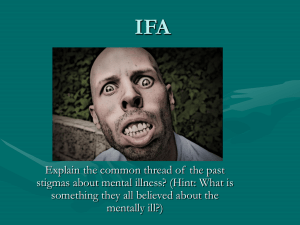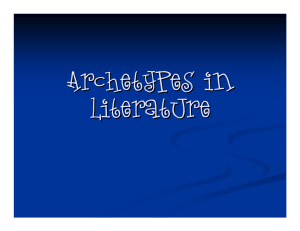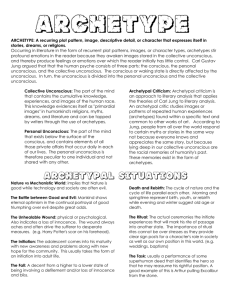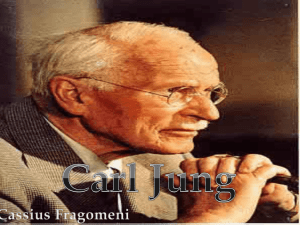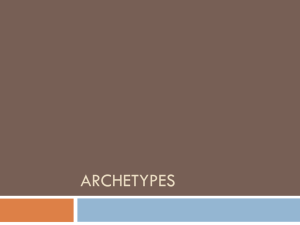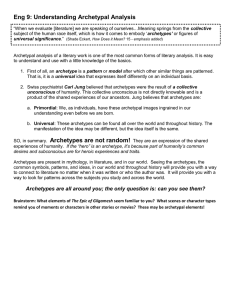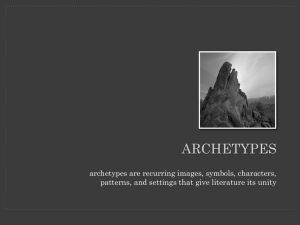Archetype Notes
advertisement
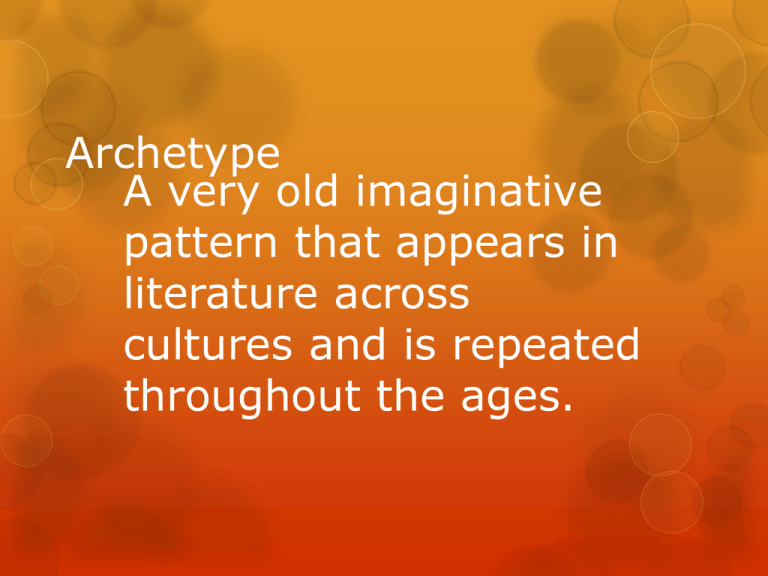
Archetype A very old imaginative pattern that appears in literature across cultures and is repeated throughout the ages. Two Famous Psychologists and Their Theories Sigmund Freud “Personal Unconscious” -VSCarl Jung “Collective Unconscious” Sigmund Freud, German Psychologist He hypothesized that archetypes exist in the personal unconscious, which is based on personal experiences. The personal unconscious is individual, not universal. It is learned, not instinctive. This “Personal Unconscious” theory by Sigmund Freud claims we are born into this world as “clean slates.” This theory claims all human behaviors are “programmed” into us by our environment (fairy tales, nursery rhymes, children’s games, etc. ) Carl Jung, Swiss Psychologist He believed that beneath an individual’s unconscious, lies the “collective unconscious” of the human race. The “CU” has pre-existing knowledge. The “CU” is not individual, but universal; and is instinctive, not learned. He believes human minds at birth contain “inherent predispositions” to perceive in categories archetypes. What?! In other words, Jung believes that when a newborn baby smiles, its smile is a universal, archetypal behavior. When a newborn baby suckles, frowns, cries--all of these instinctive behaviors are archetypal. More archetypal Behaviors… In fact, most young animals (including humans) have an inborn urge to relate to some sort of mother figure. So, simple inborn, primal instincts such as hunger, reproduction, the need for a mother-figure, and anger are all part of the wide range of behaviors which fall within the category of archetypal behaviors. Carl Jung Overview According to Carl Jung, we are born with archetypes. Different cultures “dress them up and put different clothes on them”…but the core image and energy is the same archetypal images. Our daily life is experienced as archetypal behaviors. Personal Unconscious versus Collective Unconscious Sigmund Freud maintained the personal unconscious is a personal experience that has been forgotten or repressed. Carl Jung maintained the collective unconscious has never been conscious, but is the part we share with all of humanity: proof of its existence can be found in the study of the similarity of dreams, delusions, myths, religion, stories, stereotypical ideas, etc. Archetypes: Primary and Enduring Patterns Basic to Literature These recurring patterns are found in situation (plot). Ex. The battle between good and evil. These recurring patterns are found in characters. Ex. The hero or the damsel in distress. These recurring patterns are found in symbols. Ex. Light often symbolizes goodness while darkness is often associated with evil. Archetypical Characters Damsel in distress- vulnerable woman who needs to be rescued Outcast- banished from a social group Hero- mysterious/unusual birth -returns to kingdom after reaching manhood -loses favor with the Gods Five Elements of the Hero Quest: the hero quest which the archetype has set out on; may not realize he/she is on such a quest until it is too late to retreat Fear: usually the motivating factor for undergoing the quest; also the principal danger that lurks in the shadow of the archetype Dragon: represents the major problem/obstacle of the quest; must be overcome for the quest to be successful Task: must accomplish in order to succeed at the quest; failure can lead to becoming the dark shadow or dark self Virtue: succeeding at the quest earns the hero these rewards of self, such as the princess, the castle, etc. Mentor-Pupil Relationship The mentor teaches the initiate often by example, the skills needed to survive the quest and rule successfully. Loyal Retainers They are somewhat like servants. They are heroic themselves. Their duty is to protect the hero. They reflect the nobility of the hero. Star-Crossed Lovers Two lovers whose union ends sadly or tragically in the death of one or both of them. Ex. Romeo & Juliet Plots: Good vs. Evil The death of a hero Boy wins girl The quest or odyssey for something greater Dead and Rebirth Examples of Nature vs. Machines Images: A place where people never die Hoarded treasure Fountain of Youth Themes: o Good triumphs over evil Love conquers all adversity. The past as a more perfect time Never Give up! Settings: Forest- place where rules do not apply Heaven – allows character to see clearly/gain sight Garden – place of beauty, safety and restraint Caves/tunnels/underground- represents a journey into the subconscious. Rivers- crossing a boundary or border, passing of time Situations: The Task- what the hero must perform The initiation- an experience which creates an awakening or awareness. The unhealable Wound- either physical psychological The ritual- actual ceremony that marks the right of passage Symbolic Archetypes Light/darkness- light suggests hope, renewal, intellegence - Darkness implies unknown, despair, or ignorance Water/desert- water is necessary to life & growth. Ex. Rebirth -desert is associated with bareness and death
